expiredKDoggMDF posted Mar 07, 2023 02:17 AM
Item 1 of 7
Item 1 of 7
expiredKDoggMDF posted Mar 07, 2023 02:17 AM
18TB Seagate Exos X18 7200RPM 3.5" Internal Enterprise Hard Drive (Recertified)
+ Free Shipping$190
$300
36% offServer Part Deals
Visit RetailerGood Deal
Bad Deal
Save
Share
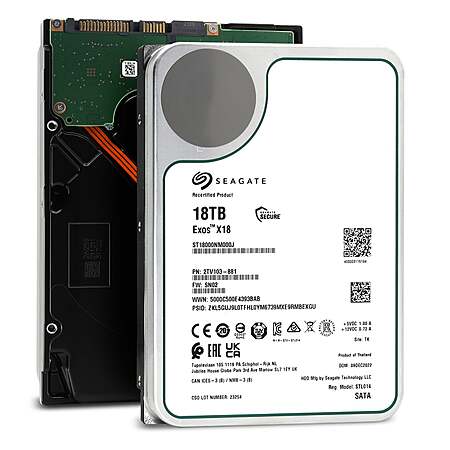
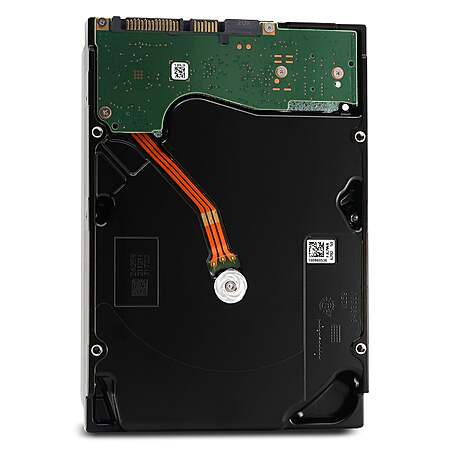
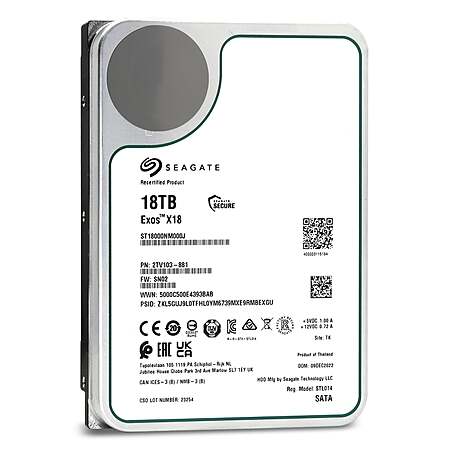
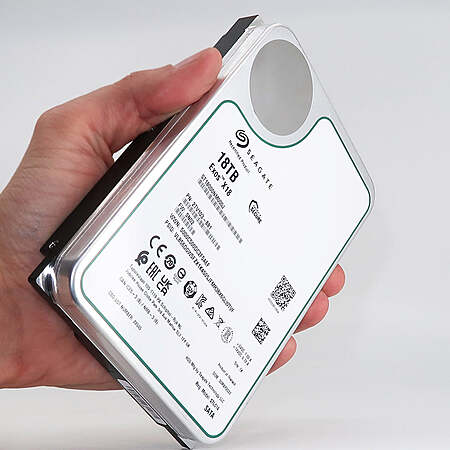
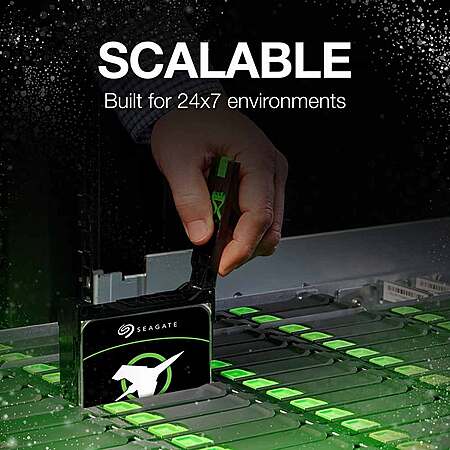
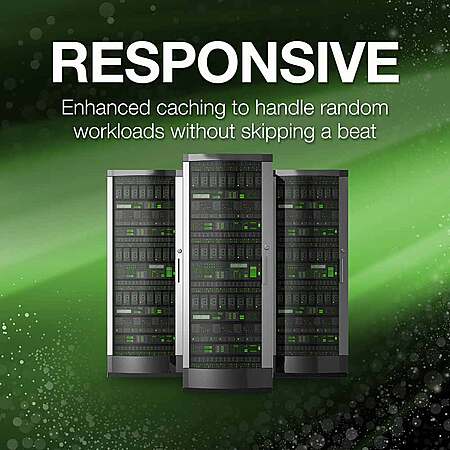
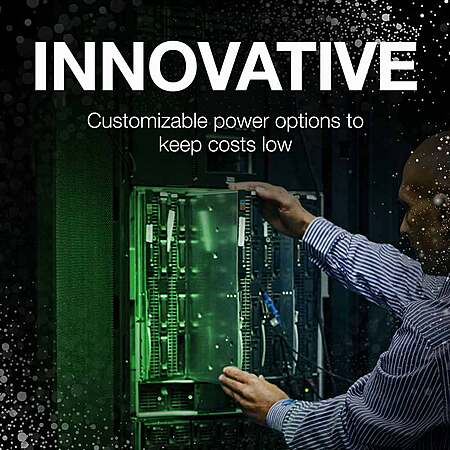


Leave a Comment
Top Comments
225 Comments
Sign up for a Slickdeals account to remove this ad.
Seriously, you do you man. I also had 5 3TB seagate drives that all died. I also had bad maxtors and we all remember the deathstars. I just choose to separate my personal past experiences from what my expectations are of the future. There is nothing wrong with holding a grudge against them.
It's still a good deal and likely a good drive, and for the same price I'd buy a WD instead as well.
the x18 , x20 even the x16 drives are enterprise grade drives and are perfectly fine , even if they are recerts from seagate. I should know I bought 30 qty. I had one issue where i had to RMA a drive because it developed 1 bad sector , they took it back and paid shipping both ways. You talk about 3TB drives , those were years ago when they came out and they were awful, not to mention the 4s, 6s, and 8TB SMR drives. We are talking about CMR drives now. Someone like myself who bought 30 qty saved over 4500 bucks buying new. On top of that I did not pay tax LOL. What a deal. Go figure out and setup a true nas or unraid server and run all CMR drives , i run scrutiny which shows all my drives which is stricter than the backblaze reports when it comes to firmware errors, such as CRC dma errors or whatever. In fact i just checked my WD 12TB and they all have errors, but they are still Green if i run a normal firmware check , they are all within specifications and so are my seagate CMR drives, X14,16,18,x20
I run 2.5PiB btw have 2 server racks full of drives and they are constantly reading. If someone is writing/Reading 550TB a day like Google and then yes maybe WD /hitachi is a better option for enterprise. Home users will never see a difference .. I will admit i have had 1 18TB drive x18 go bad within 24 hours, and a 8TB SMR drive seagate die from bad sectors as well as a 14TB iron wolf pro , but it still runs. WD has yet to give me any bad sectors, this running about 140 drives. Like I said earlier use hard drive sentinel windows or the docker scrutiny to check the drives. Also you should write to the complete drive at least once when you get it. There is programs out there that can do this for you. I dont even bother.
Also for people on here who think they should be paying for shipping to return a bad drive after 30 days is pretty dumb as not even seagate or WD/Hitachi on a new drive will expect you to pay for the return label LOL
Selller gives 2 year warranty ,no tax outside florida , what a deal
You are saving over 100 bucks per drive for new!
If a company has a long rap sheet, not a chance I'm going to give it the benefit of the doubt until they've positively proved that they've redeemed themselves. When you get burned 5+ times by the same company over a span of 20 years, each time hoping they'd do better (well, the discounts from Seagate were tempting) the next time round, the grudge is immense.
Your anecdotal experience matches mine and many others, so their failures are by no means flukes. "Fool me once, ..." and you know the rest.
The BackBlaze report isn't helping either as it shows Seagate by 2020 still hasn't learned their lesson and they still haven't got their reliability to match its competition. I'm not giving a brand an excuse if their drives are consistently 3 times less reliable and it's not over a small sample like 30 drives so the number is likely be a fluke.
To me, a 40% discount is not enough for me to choose Seagate over WD. It's just wishful thinking to assume Seagate is just as good. Between buying two WD drives and 3 Segates to mirror, I'd pick 2 WD drives at anytime as there's less heat and one less SATA port to deal with.
I am pretty sure we will see even the 20TB go on sale eventually as both companys are moving towards nand hard drives that get 500MB/s read and write , or close to it.
I am glad this company exists! and plan on buying more
btw i have two unraid servers and have rebuilt my entire array on 2 parity disks and used these several times to upgrade my array and not had one issue. All hard drives develop some sort of error but as long as it is within firmware specs they will run fine. When you start getting bad sectors or the drive health has diminished below 100%is when you should be concerned. Any drive can easily be checked with hard drive sentinel for windows
I am pretty sure we will see even the 20TB go on sale eventually as both companys are moving towards nand hard drives that get 500MB/s read and write , or close to it.
I am glad this company exists! and plan on buying more
btw i have two unraid servers and have rebuilt my entire array on 2 parity disks and used these several times to upgrade my array and not had one issue. All hard drives develop some sort of error but as long as it is within firmware specs they will run fine. When you start getting bad sectors or the drive health has diminished below 100%is when you should be concerned. Any drive can easily be checked with hard drive sentinel for windows
I agree with you that if you are doing redundancy instead of just ripping blu-rays for media center, yes, that consistently 0.5% (HGST) vs 1.5% (in a few Seagate) failure rate doesn't make that much of a difference. A WD gold on sale would be more cost effective than 2 riskier Seagate drives in a redundant array.
By the way, my Seagate drives that died on me were all sudden deaths. Actually only in the very early days 1GB~200GB, some drives that gave me enough time to make a back up before dying from bad sectors. Never got the luxury of early warning. The time I see SMART errors the drives were already clicking.
You should have 3 copies of your data, 2 of them local, and 1 offsite (321 rule). If this doesn't work for you, then at least do 1 copy of data offsite (backblaze or whatever). Personally, uptime isn't as important as simply having the data available in case something happens.
We don't have people who are simultaneously rich, geeky and bored enough to do an air-tight study that leaves no room for you to doubt. It's just not economic to do this for a youtube video and academics aren't interested in something with low science content. There's only anecdotes from user experience. Live with it.
Did you notice a lot fewer people b*tch about data loss under WD/HGST threads yet Seagate drives there's always a bunch of people with their anecdotes of their history of failed Seagate drives who can't wait to share their experience?
Data loss is a painful experience. It takes at least 2 decades to forget a few years of shitty drives a brand made. HGST learned their lessons with Deskstar/Deathstar. Even with the anecdotal stats from BackBlaze, As of 2020s, Seagate drives in their report are roughly 3 times more likely to fail than HGST and that's in a temperature controlled server room/rack, not consumer environments that's less controlled.
Backblaze is $7 a month for unlimited backup.
Sign up for a Slickdeals account to remove this ad.
It is common to see MTBF ratings between 300,000 to 1,200,000 hours for hard disk drive mechanisms, which might lead one to conclude that the specification promises between 30 and 120 years of continuous
A fun Ars article at the time was this one, where the MTBF numbers seemed to be arrived at by throwing darts at a board vs actual failure rates of drives in the wild.
https://arstechnica.com/informati...are-equal/
Backing up is essential. It's why I bought the Exos drives. I started getting a little nervous about having all my data on the same-ish type of drives, even if they've been flawless so far. One thing that puzzles me is that everyone brings up these deals on the Exos drives but rarely mentions that this seller has Ultrastars for relatively similar prices.
No one knows. The SMART data will be wiped. The only thing you really have to go on is the manufacture date.
FreeFileSync is an amazing program. It can take awhile to get a hang of but it's incredibly powerful.
I learned long ago that it's a bad idea to put all your eggs in one basket. If you end up with a flawed line/model/batch you can end up with numerous failures in a short period of time. I try to use a variety of different hardware.
It's also one of the ones where the dev sent a personal email after I donated (IrfanView was another - I felt like a rock star was acknowledging me!).
FFS has some handy features I don't even use, but primarily, the UI is attractive and easy to use and the program is reliable.
A fun Ars article at the time was this one, where the MTBF numbers seemed to be arrived at by throwing darts at a board vs actual failure rates of drives in the wild.
https://arstechnica.com/informati...are-equal/
we all have acknowledged that the older seagate drives are garbage.
These are enterprise grade X18 model which is much improved CMR
we all have acknowledged that the older seagate drives are garbage.
These are enterprise grade X18 model which is much improved CMR
Also, I'm aware it's an old article, as evidenced by me saying this when mentioning it "A fun Ars article at the time".
There's no reason to get defensive, I am not attacking Seagate (or anyone really). Just mentioning that MTBF is overrated, much like "peak power" or speeds on consumer wireless equipment. Looks impressive on the box or spec sheet but doesn't necessarily translate into anything concrete IRL.
Sign up for a Slickdeals account to remove this ad.
Leave a Comment